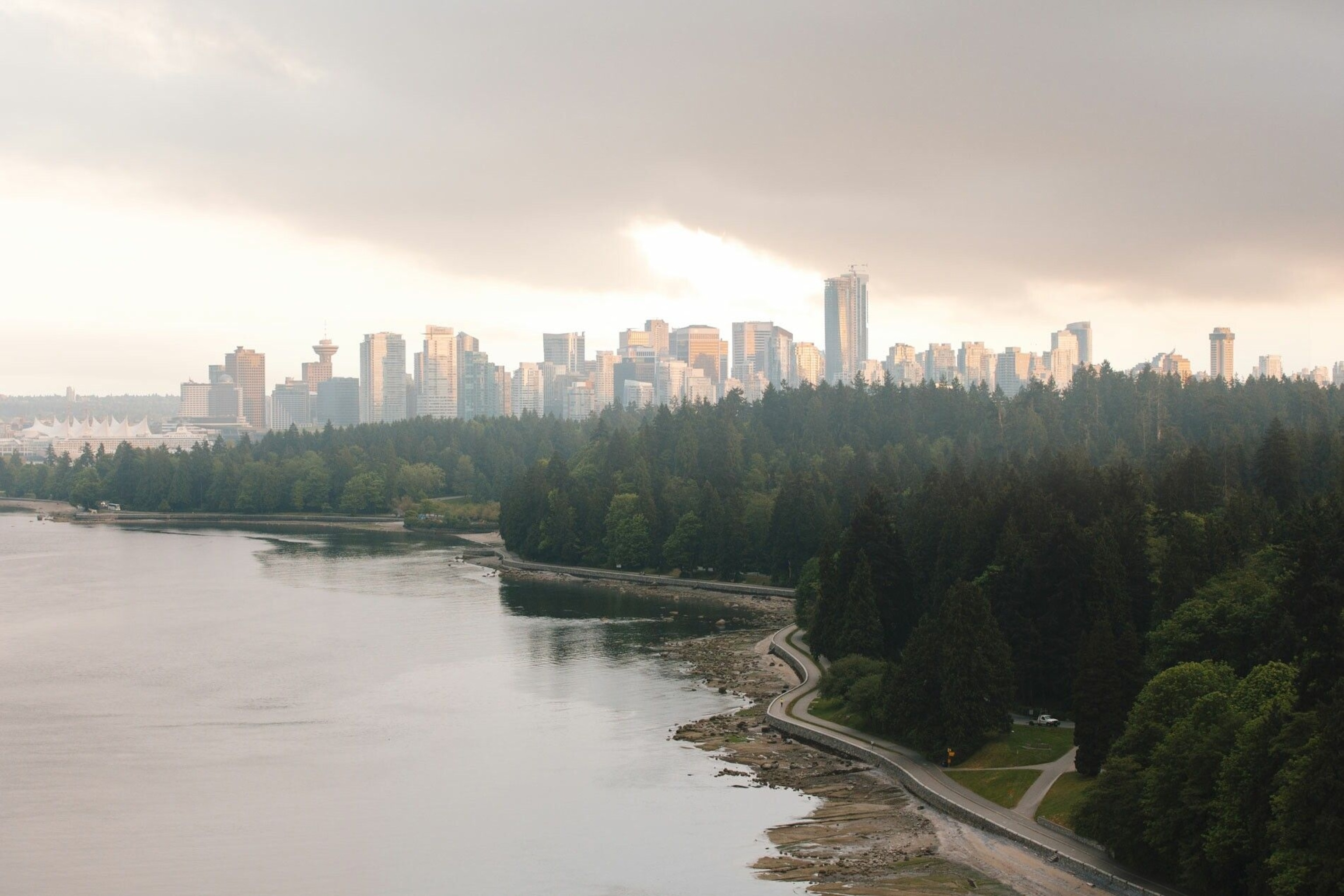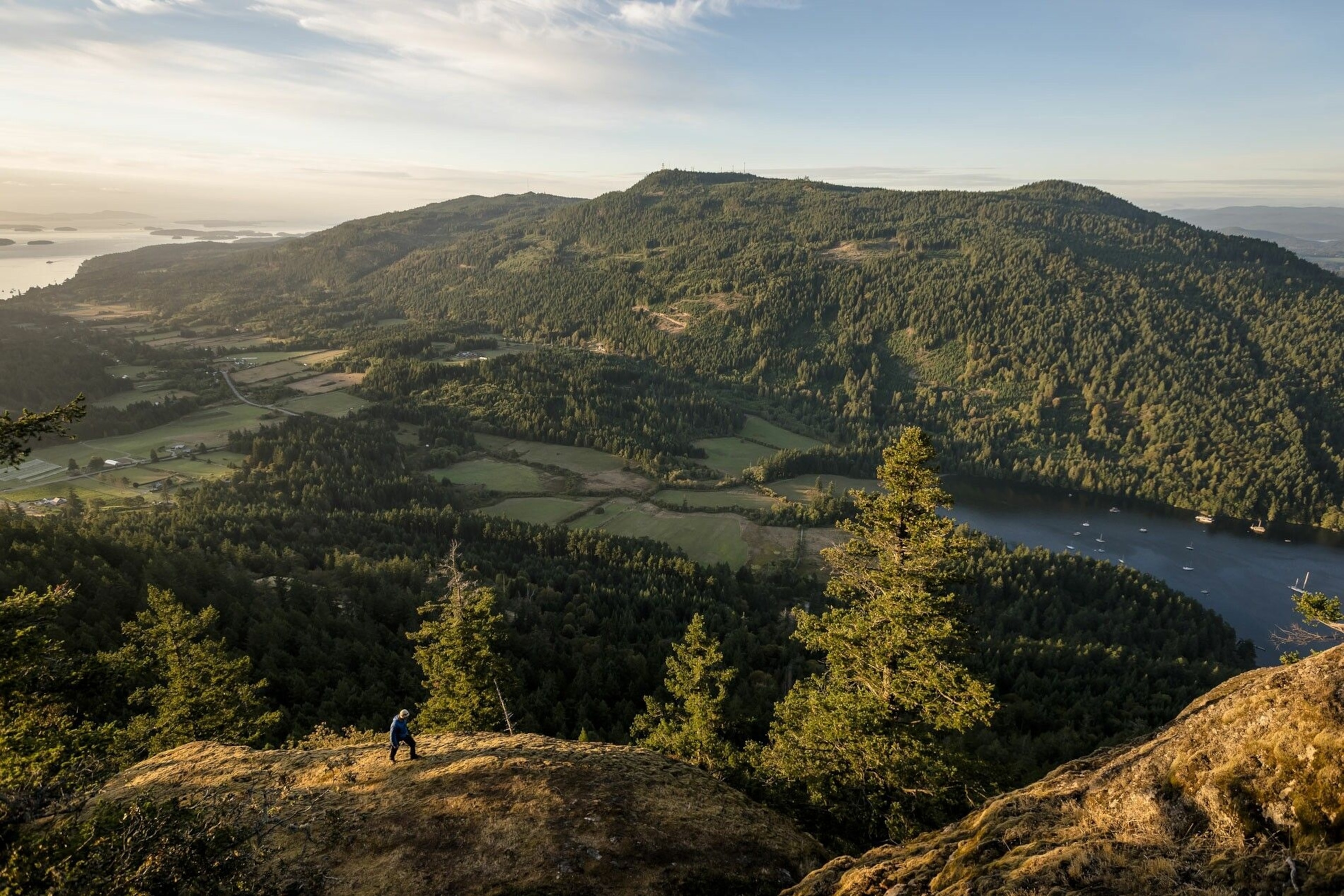
Eco-adventures in British Columbia: your two-week itinerary for transformational travels
Soul-stilling scenery, Indigenous cultural insights and inspirational conservation initiatives reward those who tread lightly in British Columbia. We show you how to plan the perfect planet-friendly tour, and why it’s so important.
Long before it was fashionable to do so, British Columbia was carving an eco-trail. Led by Vancouver — North America’s ‘greenest city’ — the province has a deserved reputation for championing sustainability. And with such inspirational scenery all around, how could you not be moved to find your way to contribute? In the presence of all those snow-capped peaks, misty rainforests and glacier-fed lakes, nature is rightly seen as the dominant force. Following the locals’ lead isn’t just the polite thing to do while you’re here — taking a nature-first approach is also the best way to get under the skin of the province and transform your physical and mental health. Here's how to do it.
Days 1 and 2: Vancouver
The city of Vancouver is a great place to start immersing yourself in green living. It was here the Slow Food movement in Canada began and, unsurprisingly, the city has now adopted the green building standards LEED for British Columbia (LEED-BC) for all new civic buildings. Hang around at the edge of False Creek for a water taxi to Granville Island, a place with sustainability at its core: once a shabby industrial site, it’s been reimagined as a vibrant culture hub, home to performing arts theatres, art galleries, studios and artisan shops. A short bike ride away is the Mount Pleasant neighbourhood, where you'll find some of the city’s hippest bars and restaurants, all of which are on a collective mission to eliminate waste.
If there’s a hangover to work off the next day, options to reclaim peace of mind abound. A brisk walk on the sea wall around Stanley Park will blow the cobwebs away. Guides on the Talking Trees walking tour (led by Indigenous guides) will share with you the secrets of the park’s old-growth forest, which has been a meeting place for Coast Salish First Nations for thousands of years, while its towering Douglas-firs are a majestic sight to behold, standing proud against Vancouver’s gleaming skyscrapers.

Days 3 and 4: Squamish
An hour’s drive north of Vancouver is the town of Squamish — the mountain scenery here is spellbinding. The Squamish Lil’wat Cultural Centre in Whistler — a scenic 50-minute drive along the picturesque Sea-to-Sky highway — is also well worth a visit to learn more about the Indigenous peoples of this area.
Characterised by sheer rock faces, plunging valleys and fast-flowing rivers, Squamish has become a go-to destination for adrenaline junkies and eco-travellers. Don the crash helmets for an electric mountain bike tour, taking in rugged peaks, temperate rainforests, shimmering fjords, plunging falls and the Squamish Estuary — all in just a few hours. Keep an eye out for bald eagles, too; Squamish is home to one of the largest populations of the raptors in North America. The team at Eagle Watch will give you the lowdown on these impressive birds.

Days 5 and 6: Siwash Lake Wilderness Resort
From Squamish, continue north, peeling off Highway 99 for a stay at Siwash Lake Wilderness Resort. Off-grid and off the beaten track, this family-run ranch has risen from the ashes after wildfires devastated it in 2017. Its owners are vocal advocates for green living, and the refurbished ranch is proof that luxury and sustainability aren't mutually exclusive.
Join the Fire Ecology Hike to find out how the blaze impacted the local ecosystem, both negatively and positively. The excursion, which also touches on wildlife migrations, aims to inspire guests to embrace sustainable living, and is a soul-nourishing lesson in how nature will rise from the ashes, given some assistance.
For a different perspective, enrol on the Equine Experience, which will teach you about local Indigenous culture from the saddle. Other restorative highlights include dusk campfires, dawn meditation sessions and yoga classes, while oenophiles might want to leave time for a tasting tour of the nearby Okanagan Valley wine region.
Book a once-in-a-lifetime wildlife viewing trip from Campbell River on Vancouver Island, with a stay at the Knight Inlet Lodge and experience the Great Bear Rainforest, where you can learn from Indigenous communities committed to passing on a love and passion for stewarding the land and protecting its wildlife.

Days 7 to 11: Vancouver Island
From Siwash Lake Wilderness Resort, drive the two-and-a-half hour journey to Kamloops Regional Airport, to board a flight to Victoria — British Columbia’s winsome capital. Break up the journey with a visit to Horstings Farmers Market, in Cache Creek, where you can choose from an array of freshly baked goods at their organic bakery, before heading back on the road and enjoying views of Kamloops Lake on the way.
Victoria is one of the oldest cities on the Pacific, but the Victorian and Baroque architecture of Vancouver Island’s elegant urban hub is still a surprising find in the wilds of North America’s west. Leave plenty of time for the Royal BC Museum, with its array of local and global exhibits, which offer visitors the chance to learn about BC's social and environmental history and the events and people that have shaped the province. Then it’s time to unwind and find tranquillity among nature once more: don’t pass up the opportunity to scuba dive amid kelp forests and shoals of herring with Esquimalt Eco Tours, guided by certified naturalists who will show you the incredible diversity of life blooming under the surface of the local waters.
While on Vancouver Island, tie in a two-day visit to the coastal village of Tofino. Though small in size, this idyllic corner on the wild Pacific coast is a nature-lover's playground and a haven for outdoor enthusiasts. Spot black bears in their natural habitat, join a whale-watching excursion or take a kayak tour of Clayoquot Sound — a UNESCO Biosphere Reserve — with Ocean Outfitters who specialise in carbon-neutral adventures. Learn from their expert guides about the fragility of their unique environment, but also on how they are working together to preserve and protect it.
On the four-hour journey from Tofino back to Victoria, stop at Pacific Northwest Raptors in Duncan, where you can get close to powerful birds of prey while learning about the threats they face and the steps being taken to save them.

Days 12 to 14: The Gulf Islands
To conclude your BC adventure, stop off at one or more of the laid-back Gulf Islands on your way back to the mainland. While Salt Spring and Pender are the largest in terms of sustainable ventures and products on offer — famed for their wineries and community farmers’ markets — it's easy to spend a week hopping between the islands of Gabriola, Galiano and Mayne. Decompress with self-guided hikes through fragrant, old-growth rainforests and learn about the region's unique flora and fauna.
Indigenous culture comes to the fore during a visit to the clam gardens in Gulf Islands National Park Reserve, where Indigenous peoples have cultivated clams for centuries, and a project is underway to restore the garden sites according to traditional principles.
On the ferry back to Vancouver, take a moment to reflect on your recuperative two-week journey. How has your exposure to the natural world redefined what it means to travel, while simultaneously improving your mental and physical health? With a profound impact on our brains and our behaviour, nature has the regenerative power to heal us; and we in turn harbour the power to protect it.

Essentials
Getting there & around
Vancouver International Airport is the obvious arrival point from the UK, and Air Canada and British Airways fly direct to Vancouver from Heathrow. Prices start from around £467 return. Always go out into the wilds with a trip plan. It's best to reserve car hires and any required BC Ferries sailings ahead of time, especially in summer. Zero Car provides electric car rentals, while mobile apps such as Plugshare and Chargehub locate nearby EV charging stations for electric vehicles. Alternatively, CycleBC and The Pedaler offer a range of bikes, e-bikes and scooters to navigate Vancouver and Victoria.
When to go
British Columbia is beautiful year-round. While summer is the peak season due to warmer temperatures and less precipitation, you may want to time your visit with nature's own awakening by travelling in the spring.
How to do it
All regions of BC are committed to sustainable tourism and have received, or are pursuing, the Biosphere certification. When considering hotel and restaurant bookings, look out for the Ocean Wise logo on menus to choose sustainable seafood options and identify lodgings that are taking steps to reduce environmental impacts by referring to their Green Key eco-rating.
Nature has a lasting effect on us and experts say that the bigger the nature, the better. Take a moment and connect with British Columbia's great wilderness, even before you travel. Call the Wild at HelloBC.com






